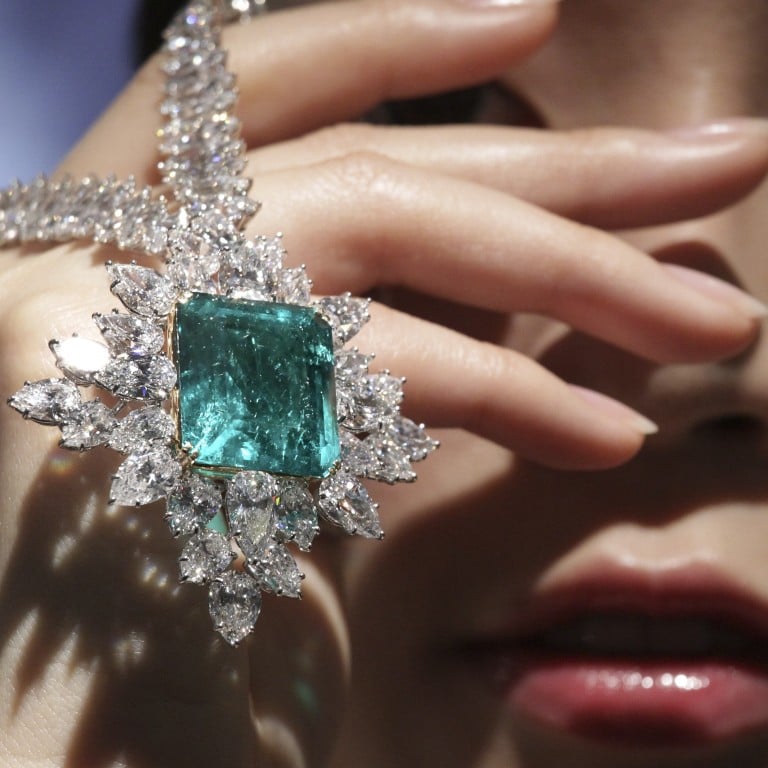China’s untapped demand for gold and diamond jewellery – 5 trends behind the booming millennial market driven by young couples in love

When a friend asks what they should give their partner for Valentine’s Day or birthday, more often than not an answer that surfaces is jewellery. The practice of gifting jewellery has predated modern history: archaeologists argue that the first evidence of jewellery gifting, a crafted shell, dates back 37,000 years. while historians claim that a fishbone necklace served as the first example of such an exchange.
That custom has not only persisted but in fact morphed into a behemoth industry that serves as the lifeline of many around the world as well as underscoring the balance sheets of numerous economies. China is no exception to this, and is in fact surfing well ahead of the tide. Here are five under-noticed trends behind China’s jewellery market, according to Hype Asia.

Despite being the 3rd largest market in the world and softening market conditions, China’s jewellery market remains largely untapped
According to Hype’s internal estimates, China’s total jewellery retail sales reached up to 265 billion yuan (US$38.8 billion) in 2019 alone, with an average monthly turnover of 24 billion yuan. The average Chinese consumer spent more on jewellery than they did on drinks, furniture and home decor. Despite this glaring figure, this represents only 0.6 per cent of the total average consumption in any given month for Chinese consumers, a small figure compared to an average 1.6 per cent of income for the average American consumer.
More weddings, more babies – the bright light for jewellers post-Covid-19
Recent growth rates have slowed amid volatile market conditions though long-run fundamentals still remain salient: a ballooning upper middle class and affluent class with a penchant for luxury jewellery.

Gold is still the dominant jewellery of choice
According to China’s Gold Association, gold accounts for 58 per cent of jewellery traded on the mainland, with consumers buying more than 736 tons of gold jewellery in 2018 – an amount equivalent to the weight of three full-sized Boeing 747 aeroplanes. With a healthy growth rate of 10.3 per cent from 2010 to 2018, gold is expected to continue to grow with its use in everything from bridal bangles to longevity plates. As one of four pillars of destiny in Chinese culture, the demand for gold is not expected to blow out any time soon.

Diamonds are becoming more popular with young millennials in China
Despite a preference for gold, as nominal wages surge and influence of western jewellery choices disseminate, diamonds are becoming a popular choice for the Chinese consumer. According to De Beers’ Diamond Insight report, China has climbed to become the second largest diamond market in the world, right behind the US, at an estimated market value of 80 billion yuan.
Luxury men’s jewellery is trending – thanks to K-pop
In 2018 alone, retail sales of diamonds reached up to 62 billion yuan, a quarter of the total jewellery market value, a paltry sum compared to 48 per cent share in international markets, suggesting wide room for development. Much of this demand is coming from Chinese consumers under the age of 40 with De Beers estimating 80 per cent of all purchases were done by millennials.

Made-to-order jewellery is becoming a popular option for young couples
According to a recent survey, bespoke diamond rings are the first choice for wedding rings when it comes to 75 per cent of young couples. This is a significant amount given that the wedding market accommodates over 50 per cent of consumer jewellery sales. According to Hype internal estimates, the market value for made to order jewellery could reach up to 7.1 billion yuan in 2020.
Demand for bespoke jewellery largely follows an interest in customising pieces and gifting jewellery pieces of a more unique nature. In other categories such as gold, many direct-to-consumer brands have capitalised on recent advancements in vermeil gold to create lasting pieces at digestible prices for millennial targets.

E-commerce uptake: a promising avenue for many domestic and international retailers
With the practice of purchasing any daily staple goods to even luxury items online, jewellery pieces have also followed such a course. Many jewellery brands have shifted to online channels popular among millennials; brands such as Zbird, Chow Tai Fook and Chow Sang Sang who have all launched various e-commerce sales channels. Brands have also explored the online-to-offline (O2O) model which has exhibited formidable traction in China. Despite such headway, online sales only represent 5 per cent of total jewellery sales, highlighting significant room for growth.
Why opals enchant designers and are the latest high jewellery trend
With increasing appetite from luxury foreign brands to reach Chinese consumers, there is no doubt that jewellery is an important industry to keep on the radar. As savvy Chinese millennials form an increasing part of the spendthrift Chinese consumer populous, brands ought to take note of their eye for quality, uniqueness and impeccable service. Foreign brands who hope to take a slice of China’s jewelled pie will need to stay ahead of the latest style trends as well as e-commerce activity to stand a chance.
Want more stories like this? Sign up here. Follow STYLE on Facebook, Instagram, YouTube and Twitter .

How did we get from gifting shells and fishbones to gold and diamonds? According to Hype Asia China’s total jewellery retail sales reached up to 265 billion yuan (US$38.8 billion) in 2019 alone, with an average monthly turnover of 24 billion yuan, but the market remains largely untapped and unknown internationally